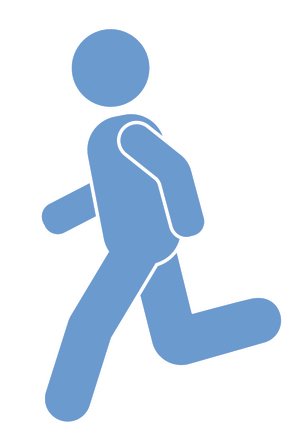

The U.S. Department of Health and Human Services (HHS) has released the 2018 Physical Activity Guidelines for Americans, an update of recommendations published in 2008. “The new guidelines provide more evidence-based reasons to be active than ever before,” says Roger A. Fielding, PhD, director of Tufts’ Nutrition, Exercise Physiology, and Sarcopenia Laboratory, “and they make it clear that even some activity is better than none.”
Image © cherstva | Getty Images


Updated Health Benefits. Only 23 percent of adults currently meet aerobic and strength training guidelines, but there is an impressive list of reasons why we should try to move more and sit less. “A review of existing evidence on the health benefits of physical activity revealed stronger support for the potent health effects of physical activity,” says Fielding. “Being active helps prevent several chronic diseases and may help minimize some symptoms and disease progression in those who already have these conditions.” Based on an extensive body of scientific research, the new guidelines indicate that building or maintaining muscle and getting one’s heart rate up on a regular basis is associated with:
-Lower risk of heart disease, stroke, high blood pressure, high cholesterol, and type 2 diabetes
-Prevention of eight types of cancer, including breast, colon, bladder, esophagus, kidney, stomach, lung, and endometrial
-Lower risk of developing dementia and Alzheimer’s disease, and improved cognition for adults over 50 and those with dementia, Parkinson’s disease, multiple sclerosis, and ADHD
-Lower risk of developing depression (including postpartum depression), and diminished symptoms for those with anxiety and depression
-Improved bone health, physical function, sleep quality, and overall quality of life
-Lower risk of falls and fall-related injuries in older adults
-Prevention of excessive weight gain and maintenance of healthy weight
-Slower disease progression for those with high blood pressure and type 2 diabetes
-Less pain from osteoarthritis


Any Activity is Good Activity. Making physical activity a regular part of daily life is ideal, but the updated recommendations emphasize that any amount of physical activity is better than nothing. “The guidelines provide new attention to the idea that being sedentary is a big risk factor for many chronic diseases,” says Fielding. “While previous guidelines stated that bouts of activity need to be at least ten minutes long, the new guidelines indicate there are immediate benefits to even short bouts of physical activity, including decreased blood pressure, reduced anxiety, improved sleep, and better blood sugar control.”
Increasing physical activity is a priority for improving and maintaining health, and spending hours in a gym isn’t the only way to reap benefits.
2018 Physical Activity Guidelines for Adults
-Adults should move more and sit less throughout the day. Some physical activity is better than none. Adults who sit less and do any amount of moderate-to-vigorous physical activity gain some health benefits.
-For substantial health benefits, adults should do at least 150 minutes (2 hours and 30 minutes) to 300 minutes (5 hours) a week of moderate-intensity, or 75 minutes (1 hour and 15 minutes) to 150 minutes (2 hours and 30 minutes) a week of vigorous-intensity aerobic physical activity, or an equivalent combination of moderate- and vigorous-intensity aerobic activity. Preferably, aerobic activity should be spread throughout the week.
-Additional health benefits are gained by engaging in physical activity beyond the equivalent of 300 minutes (5 hours) of moderate-intensity physical activity a week.
-Adults should also do muscle-strengthening activities of moderate or greater intensity and that involve all major muscle groups on 2 or more days a week, as these activities provide additional health benefits.
-Older adults should determine their level of effort for physical activity relative to their level of fitness.
If you are already active, keep moving! If not, start low and go slow.
-Walk, garden, dance, take the stairs, park further from your destinationit all counts toward weekly physical activity goals
-Gradually increase intensity and duration of both aerobic and strength training activities
-Set reminders to take an active break from sedentary tasks
-Get up and walk for a few minutes for every 30 to 60 minutes of sitting
-Track activity with a fitness tracking band, app, or simple notebook for a proven boost to motivation
-Find a fitness buddy to increase fun, motivation, and accountability
-Stretch after aerobic and strength training sessions to reduce post-workout soreness and injury risk
-Try chair exercises or water-based activities if chronic conditions limit movement



























I teach a bone building class and i m looking for an update on what exersizes
We should be doing.